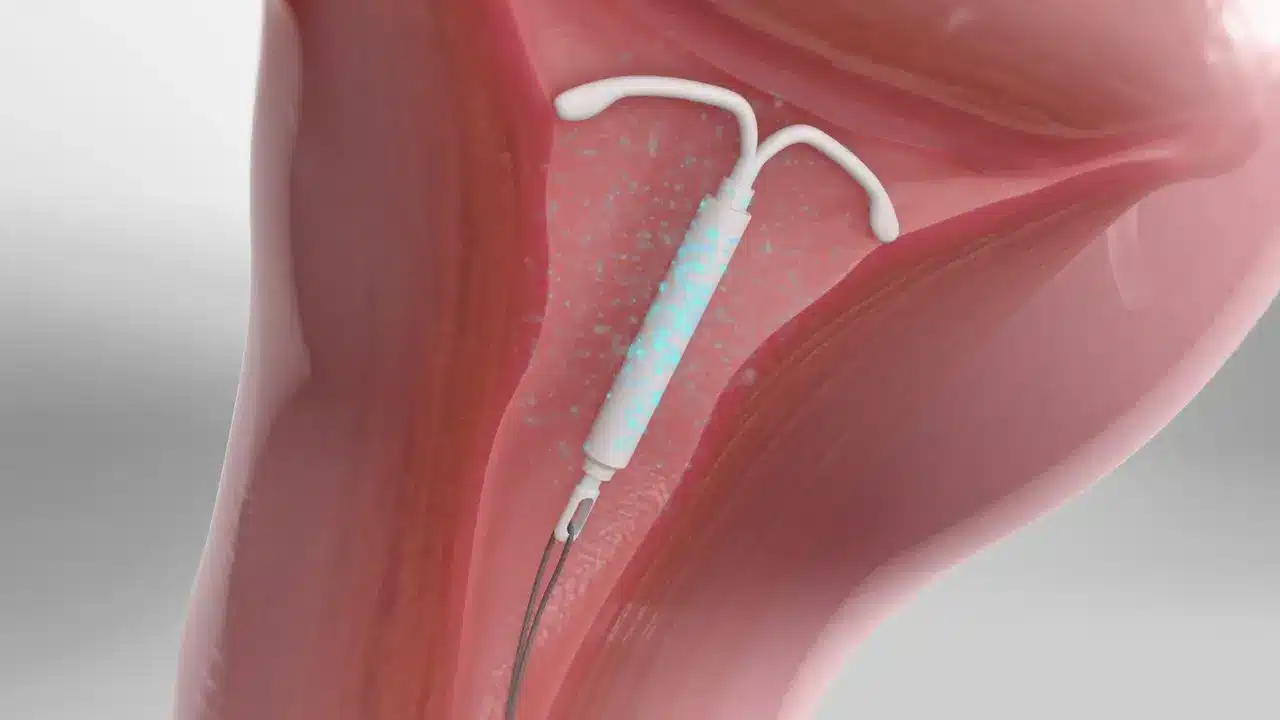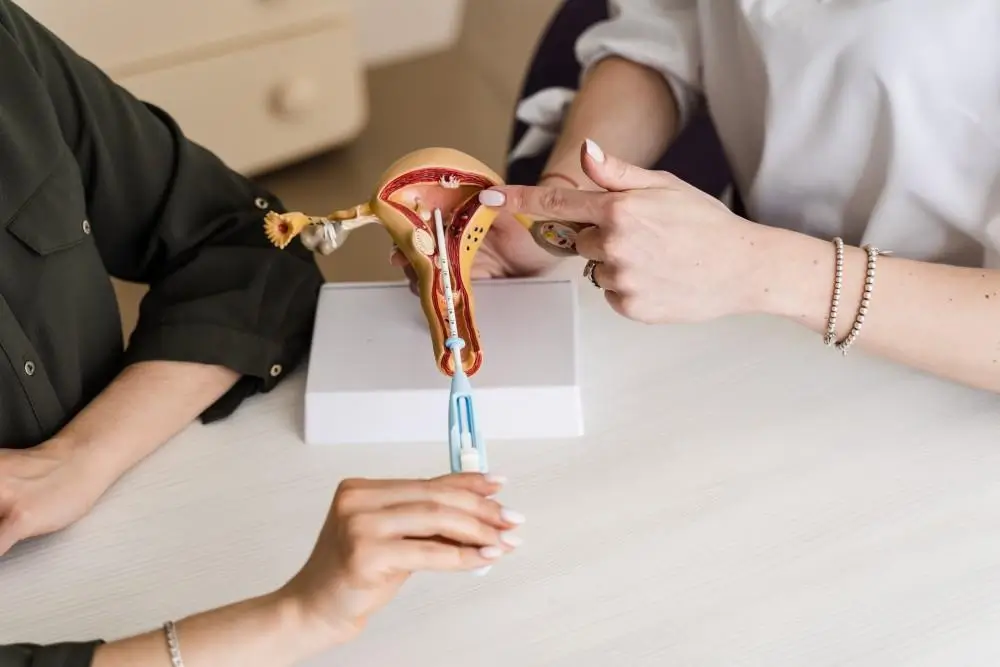Only for Licensed Professionals
Only for Licensed Professionals
.webp)
Jaydess vs Mirena – Comparing IUDs
David Fuller
Last Updated On: June 16, 2025
Long-term studies of devices releasing about 20 μg of levonorgestrel daily have demonstrated a very low pregnancy rate over a five-year period. These studies also show that such IUDs are highly effective in managing heavy menstrual bleeding, often providing a non-surgical alternative to hysterectomy. While some women may experience intermenstrual bleeding during the initial cycles, most report that this side effect subsides over time.
This success paved the way for newer generations of hormonal IUDs, including Jaydess and Mirena. Though both devices rely on levonorgestrel, they differ in dosage, duration of action, and target users, making it crucial to understand their distinctions when choosing the right option.
In this article, we’ll compare Jaydess and Mirena, examining their efficacy, size, side effects, and user experience, helping you make an informed decision about which IUD best suits your needs.
Key Takeaways
- Jaydess and Mirena are both hormonal IUDs that offer highly effective contraception with over 99% efficacy.
- Jaydess is a smaller device with a lower hormone dose (13.5 mg of levonorgestrel) and is suitable for up to 3 years of use, making it ideal for those seeking a gentler hormonal experience and easier insertion.
- Mirena is larger, contains a higher hormone dose (52 mg of levonorgestrel), and offers protection for up to 8 years, making it a good choice for long-term contraception and managing heavy menstrual bleeding.
- Both IUDs are effective in reducing menstrual bleeding, with Mirena often resulting in amenorrhea (complete absence of periods) and Jaydess typically leading to lighter periods over time.
- Common side effects for both include irregular bleeding, spotting, mild cramping, breast tenderness, and headaches. However, the side effects and their severity may vary between individuals.
- Jaydess is preferred for those who want subtle changes and lighter hormonal effects, while Mirena is more suited for those needing extended use and therapeutic benefits, like reducing heavy bleeding and menstrual cramps.
About: Operating since 2016, Med Supply Solutions is known for being one of the industry’s top and trusted suppliers of cosmetic and viscosupplementation products. If you’re looking to buy Jaydess online, contact our sales department for more information.

Size, Hormone Content, and Duration
Jaydess is a smaller and more flexible intrauterine device (IUD), measuring 28 mm in length and 30 mm in width. Its compact size is particularly ideal for individuals who have not given birth or those seeking a less intrusive option. Jaydess contains 13.5 mg of levonorgestrel, releasing approximately 14 micrograms per day initially.
Meanwhile, Mirena is slightly larger, measuring 32 mm by 32 mm, and carries a higher hormone load of 52 mg of levonorgestrel. It releases approximately 20 micrograms per day initially, with a gradual decline over time. Approved for use up to eight years, Mirena is one of the longest-lasting hormonal IUDs currently available.
Thanks to its higher hormone content and extended duration, Mirena offers additional therapeutic benefits beyond contraception. It is commonly prescribed for managing heavy menstrual bleeding and can also help alleviate menstrual cramps. This makes it an excellent option for those seeking both long-term birth control and menstrual regulation.
Insertion Experience and Patient Suitability

The smaller size of Jaydess often results in a more comfortable insertion process, making it a preferred choice for younger women or those who haven’t had children. Its design minimizes discomfort during placement and reduces the risk of expulsion.
Mirena, while slightly larger, is suitable for women regardless of their childbirth history. Although some may experience more discomfort during insertion due to its larger size, Mirena offers the advantage of longer duration and additional therapeutic benefits.
Both IUDs require placement by a healthcare professional and can be inserted during a routine office visit. It’s important to discuss your individual medical history and preferences with your provider to determine the most appropriate option based on your health and reproductive needs.
Efficacy, Amenorrhea Rates, and Side Effects

Both Jaydess and Mirena are over 99% effective at preventing pregnancy, making them highly reliable and long-acting contraception options. Despite this shared efficacy, their side effect profiles and their effects on menstrual patterns differ.
Jaydess’ Common Side Effects
- Irregular bleeding or spotting is one of the most common initial side effects, especially during the first three to six months after insertion, as the body adjusts to the hormone levels.
- Over time, users may notice that their periods become lighter, shorter, or less frequent. In some cases, menstrual bleeding may stop altogether, although this is less common compared to Mirena.
- Other frequently reported side effects include hormonal acne, breast tenderness, and headaches. Some users may also experience mood changes or mild abdominal cramping, particularly during the first few cycles.
Mirena’s Common Side Effects
- Mirena often leads to a significant reduction in menstrual bleeding. Many users experience lighter periods, and some may develop amenorrhea (a complete absence of periods) within the first year of use.
- In addition to contraception, Mirena is FDA-approved for treating heavy menstrual bleeding, making it a popular choice for those seeking both birth control and menstrual relief.
- Potential side effects can include the development of ovarian cysts (typically benign and self-resolving), mood fluctuations, pelvic discomfort, or bloating. As with all hormonal IUDs, individual experiences may vary and should be monitored by a healthcare provider.
While Jaydess’ side effects may be milder for some users, the differences in their effects on menstrual cycles make understanding these side effects crucial for selecting the right IUD for your needs.
Jaydess vs Mirena: When to Choose One Over the Other
Choosing the right intrauterine device (IUD) depends on your health profile, reproductive plans, and sensitivity to hormones or device size. Here’s a comparison to help guide your decision:
| Choose Jaydess if… | Choose Mirena if… |
| You prefer a smaller device for easier insertion and added comfort. | You want long-term contraception that lasts up to 8 years. |
| You’re seeking effective birth control for up to 3 years. | You are looking to manage or treat heavy menstrual bleeding as well as prevent pregnancy. |
| You desire a lower hormone dose, potentially resulting in a gentler hormonal experience. | You’re comfortable with a slightly larger device and higher hormone levels for extended use. |
| You want a non-intrusive method for lighter, shorter periods or the possibility of complete menstrual cessation. |
Ultimately, the decision between Jaydess vs Mirena should be based on a careful evaluation of your lifestyle, hormone tolerance, and reproductive goals. Consulting a healthcare provider is the best way to find the option that suits your body and plans.
Conclusion
Both Jaydess and Mirena are advanced hormonal IUD options designed to deliver safe, effective, and long-lasting contraception. Jaydess is ideal for those who prefer a smaller, lower-dose device for shorter-term use with fewer hormonal effects. Meanwhile, Mirena provides extended protection and additional therapeutic benefits, including the treatment of heavy menstrual bleeding.
By understanding how each IUD works and what it offers, individuals can confidently choose the option that best fits their reproductive and lifestyle needs. Whether prioritizing comfort, hormonal balance, or longevity, both devices empower users with reliable, low-maintenance birth control.
FAQs
1. Can I switch from Jaydess to Mirena?
Yes, switching is possible. Consult your healthcare provider to discuss timing and any necessary evaluations before making the change.
2. Will either IUD affect my fertility long-term?
No, both Jaydess and Mirena are reversible methods of contraception. Fertility typically returns quickly after removal.
3. Do these IUDs protect against STIs?
No, neither Jaydess nor Mirena offers protection against sexually transmitted infections. Using condoms in addition to an IUD is recommended for STI prevention.
4. What should I do if I experience severe side effects?
If you experience severe pain, heavy bleeding, or signs of infection, contact your healthcare provider immediately. They can assess the situation and determine if the IUD needs to be removed.
References
Kailasam C, Cahill D. Review of the safety, efficacy and patient acceptability of the levonorgestrel-releasing intrauterine system. Patient Prefer Adherence. 2008;2:293-302. Published 2008 Feb 2. doi:10.2147/ppa.s3464
Melvin L, Scott J, Craik J. Jaydess®levonorgestrel intrauterine system. Journal of Family Planning and Reproductive Health Care. 2014;40(3):165-169. doi:10.1136/jfprhc-2014-100980
Products
Cart
Log In
Newsletter
Subscribe for exclusive offers and updates on new arrivals
Share feedback at:
Working Hours
MON - SUN 9AM to 6PM EST
The Most Popular Brands
Med Supply Solutions
Support
Secure checkout is guaranteed with full adherence to PCI DSS payment standards.
Products listed here are guaranteed authentic and manufacturer-sourced.
Pay easily with trusted providers


*Google and Apple Pay are currently only available via a direct link provided by your account manager.
Copyright 2025. Med Supply Solutions